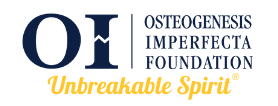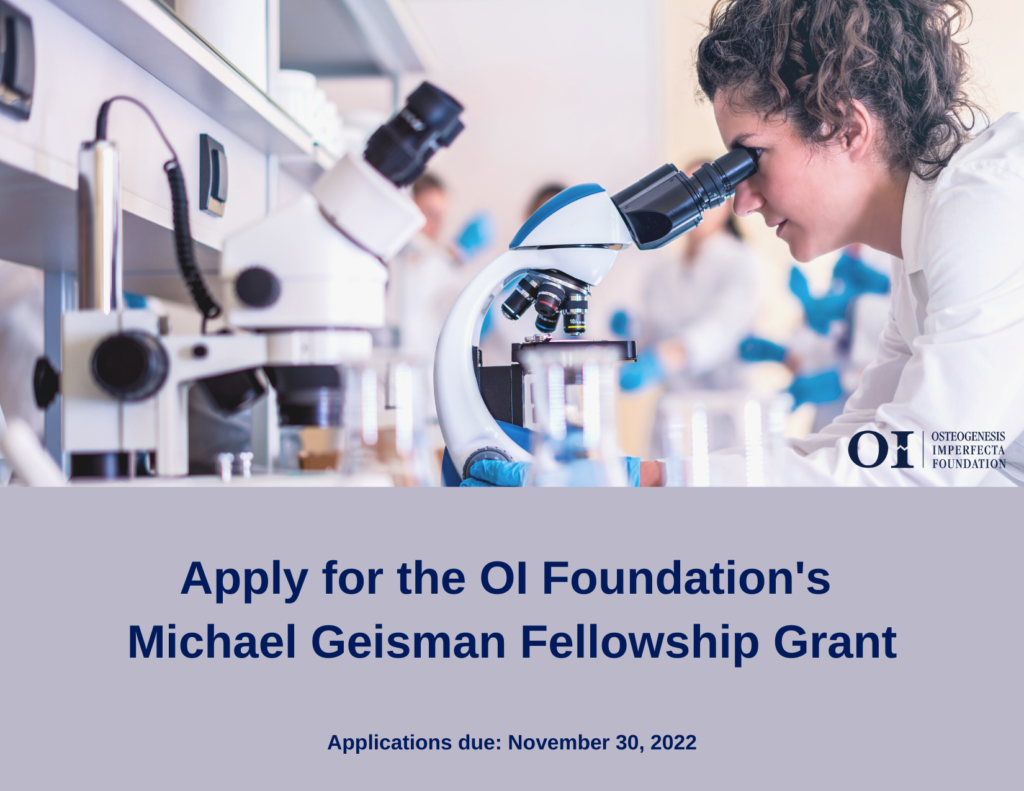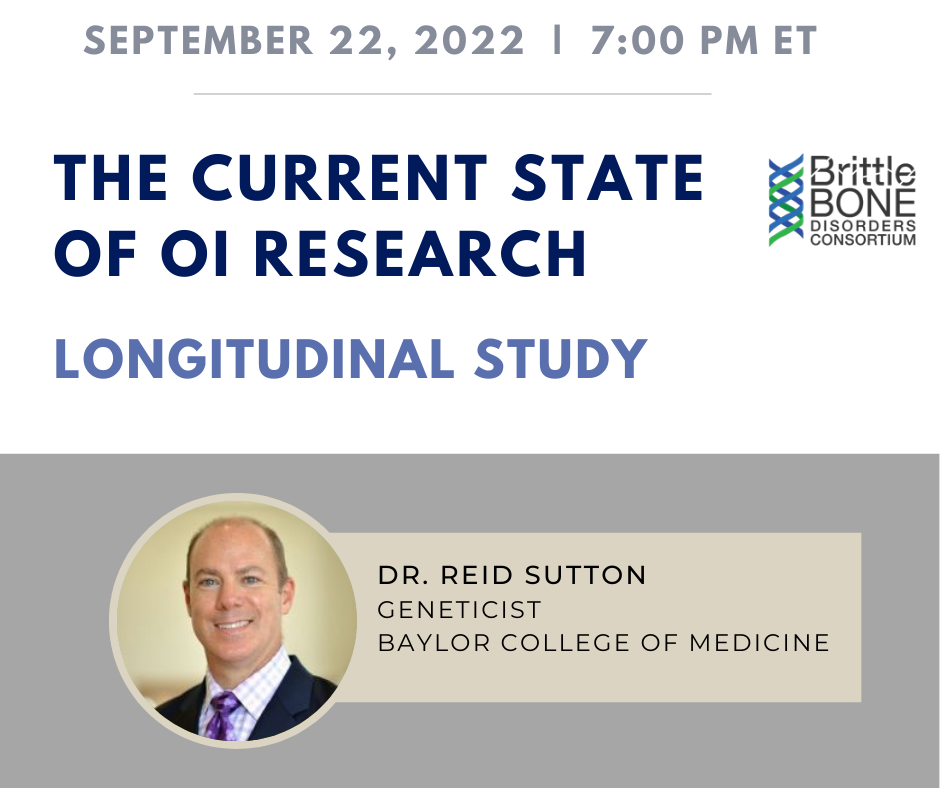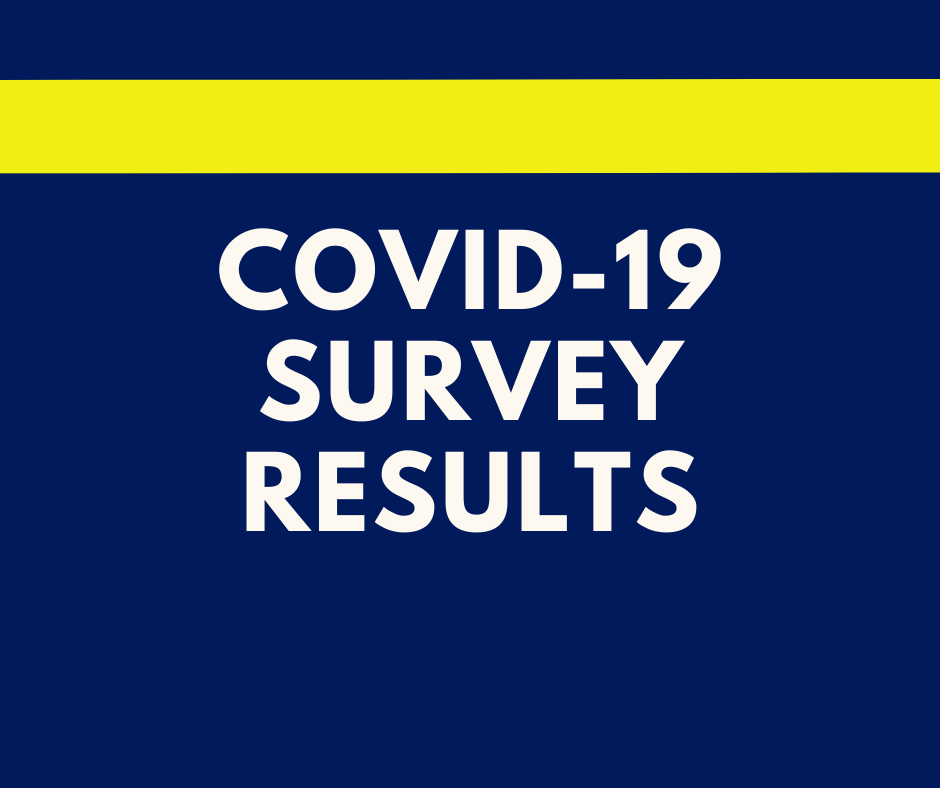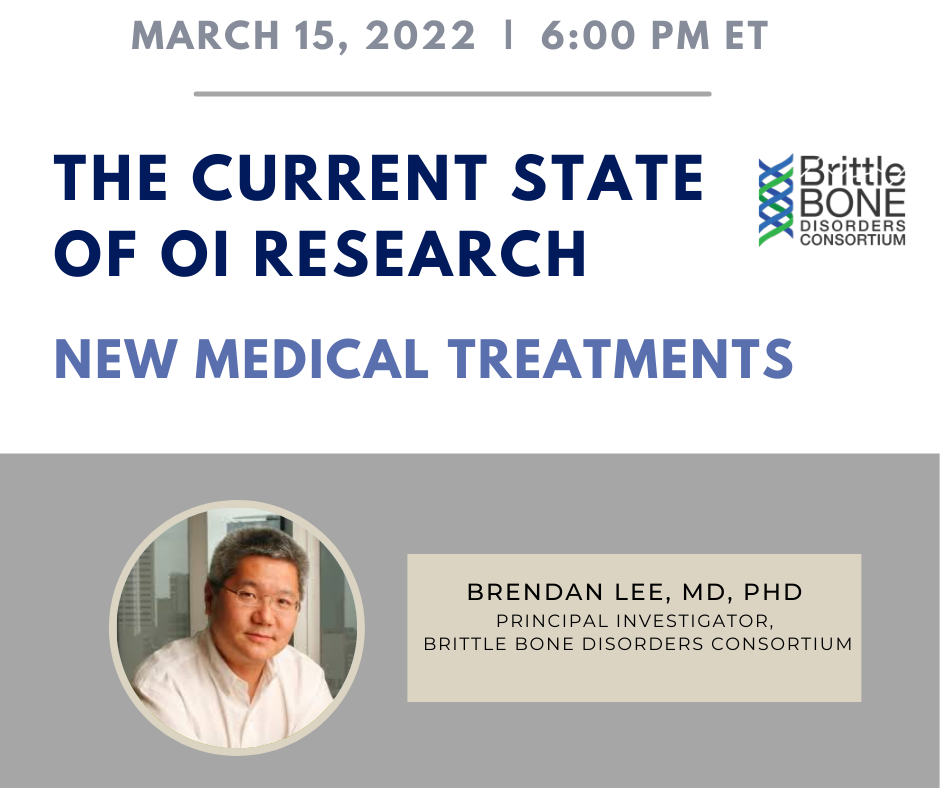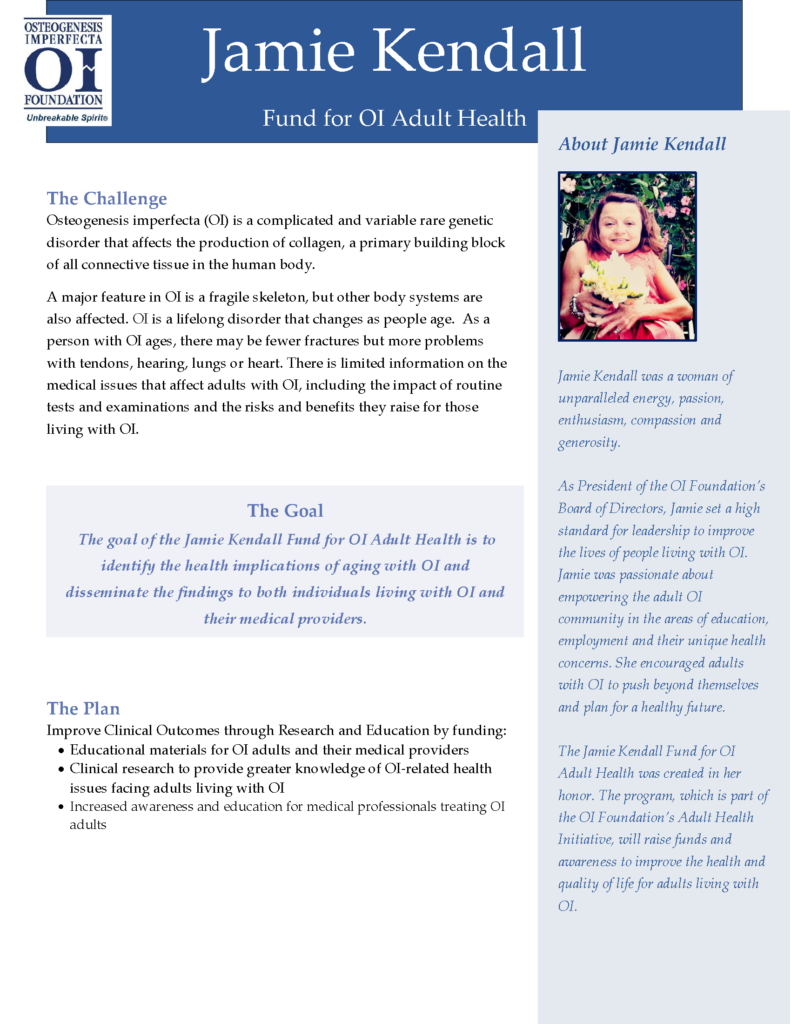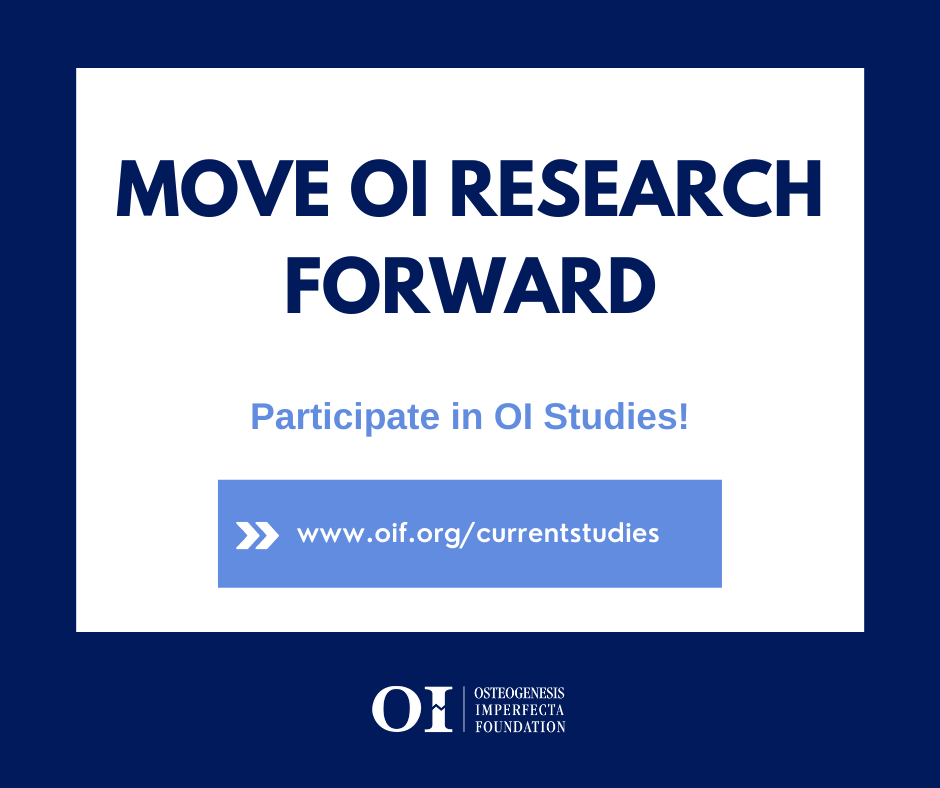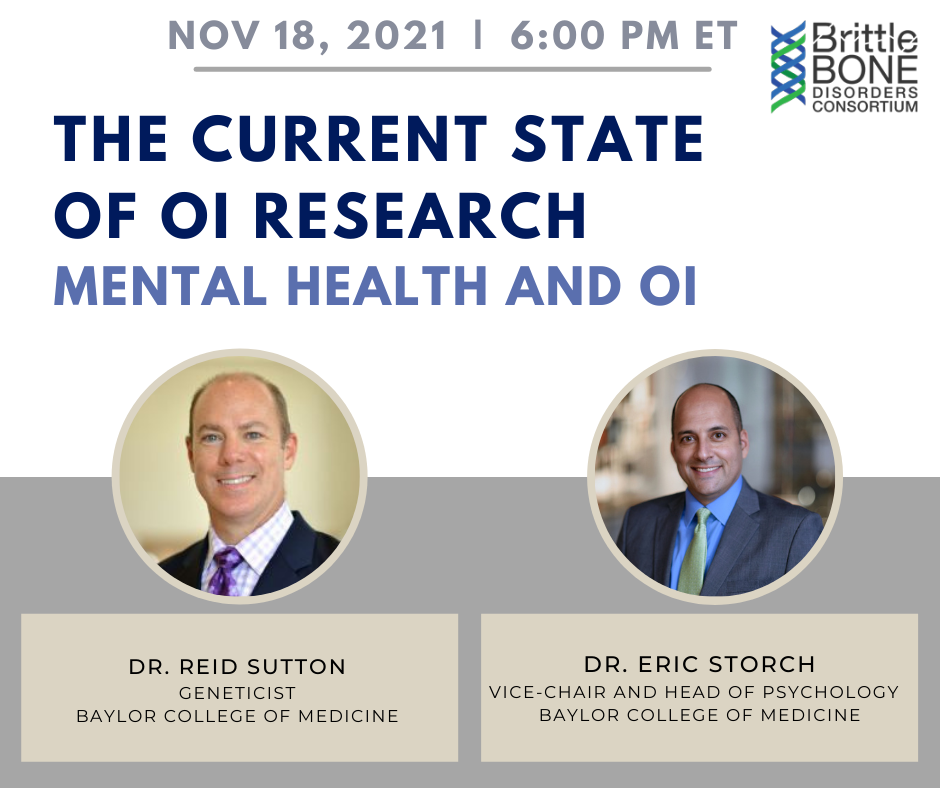Research
Michael Geisman Fellowship Grant – Applications Now Available
Michael Geisman Fellowship Grant The Michael Geisman Fellowship Grant program awards funding to post-doctoral trainees who are currently working on projects with clear relevance to osteogenesis imperfecta (OI), or who…
Read MoreOI Research Update: Longitudinal Study
BBDC Research Update: Longitudinal Study On September 22, 2022, the OI Foundation was joined by Dr. Reid Sutton (Geneticist at Baylor College of Medicine, Administrative Director and Principal Investigator of…
Read MoreCOVID-19 Survey 3 Results
Thank you to all of the 577 OI community members who took the time to fill out the OI Foundation’s third COVID-19 survey! Our goal in gathering the community’s input…
Read MoreOI Research Update: New Medical Treatments
On March 15, 2022, the OI Foundation spoke with Dr. Brendan Lee, Principal Investigator for the Brittle Bone Disease Consortium (BBDC). In this interview, they discussed new drugs being studied…
Read MoreResearch Announcement: ORBIT Study
The OI Foundation would like to bring your attention to a research study being conducted by Ultragenyx Pharmaceutical Inc: The Ultragenyx Orbit clinical study is for individuals living with osteogenesis…
Read MoreJamie Kendall Fund for OI Adult Health
Was this helpful? Submit Cancel Thanks for your feedback!
Read MoreMove OI Research Forward – Participate in OI Studies
Move OI Research Forward – Participate in OI Studies A clinical study is research that involves human volunteers and seeks to answer questions that will add to our knowledge about…
Read MoreOIF Research Update: Mental Health and OI
Thursday, November 18, 2021 | 6:00 PM During this session, Dr. Reid Sutton (Geneticist at Baylor College of Medicine and OIF Medical Advisory Council member) and Dr. Eric Storch (Vice-Chair…
Read MoreConsortium Spotlight: BBDC
This month, the Brittle Bone Disorders Consortium was featured as the Consortium Spotlight by the Rare Diseases Clinical Research Network. The Brittle Bone Disorders Consortium is part of the National Institutes…
Read MoreMeet OIF Michael Geisman Fellow: Dr. Francesca Tonelli
Meet Dr. Francesca Tonelli, OIF Michael Geisman Fellow By: Gabriela Beug, OIF Science and Media Communications Intern As osteogenesis imperfecta is a rare bone disease, research grants remain difficult to…
Read More